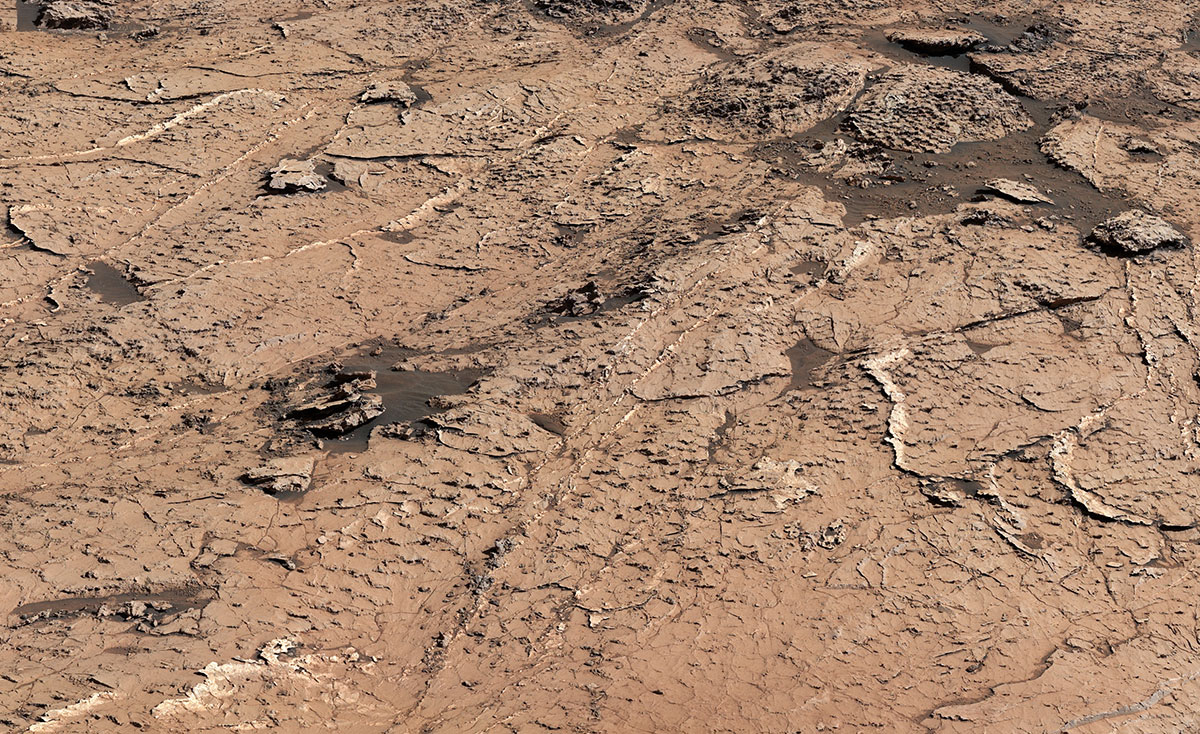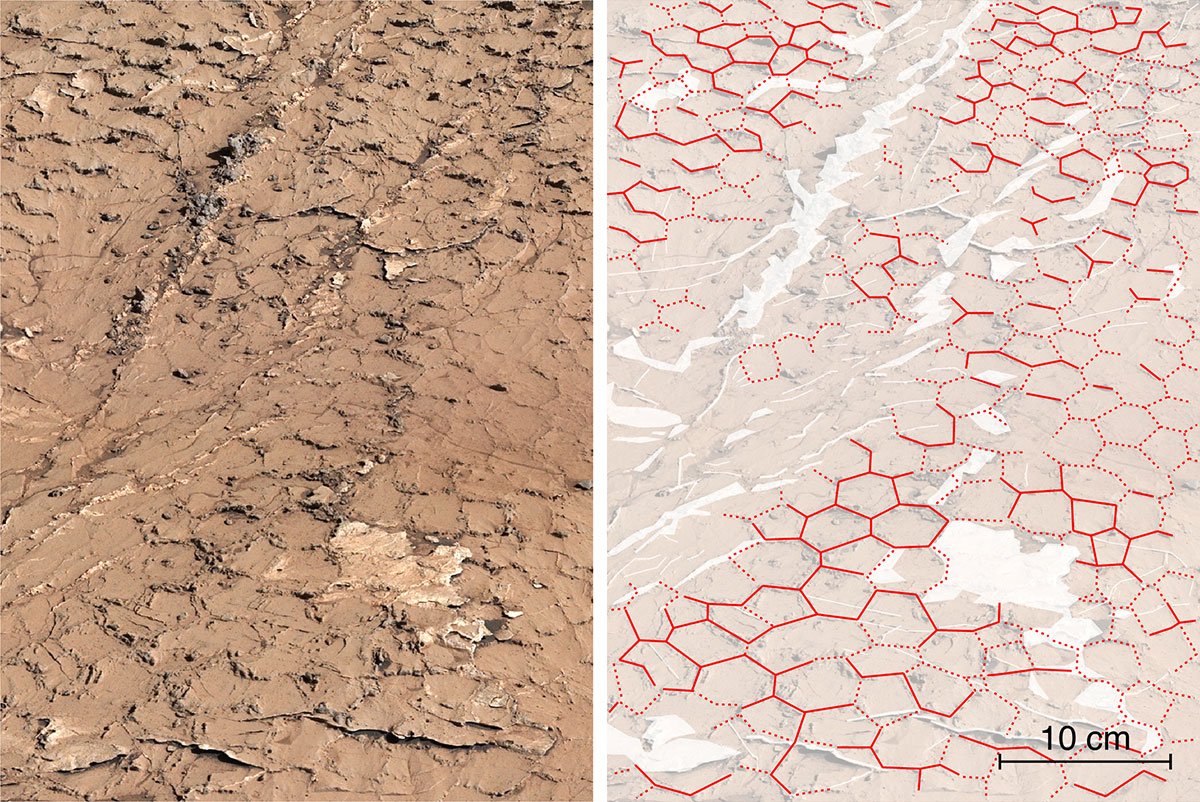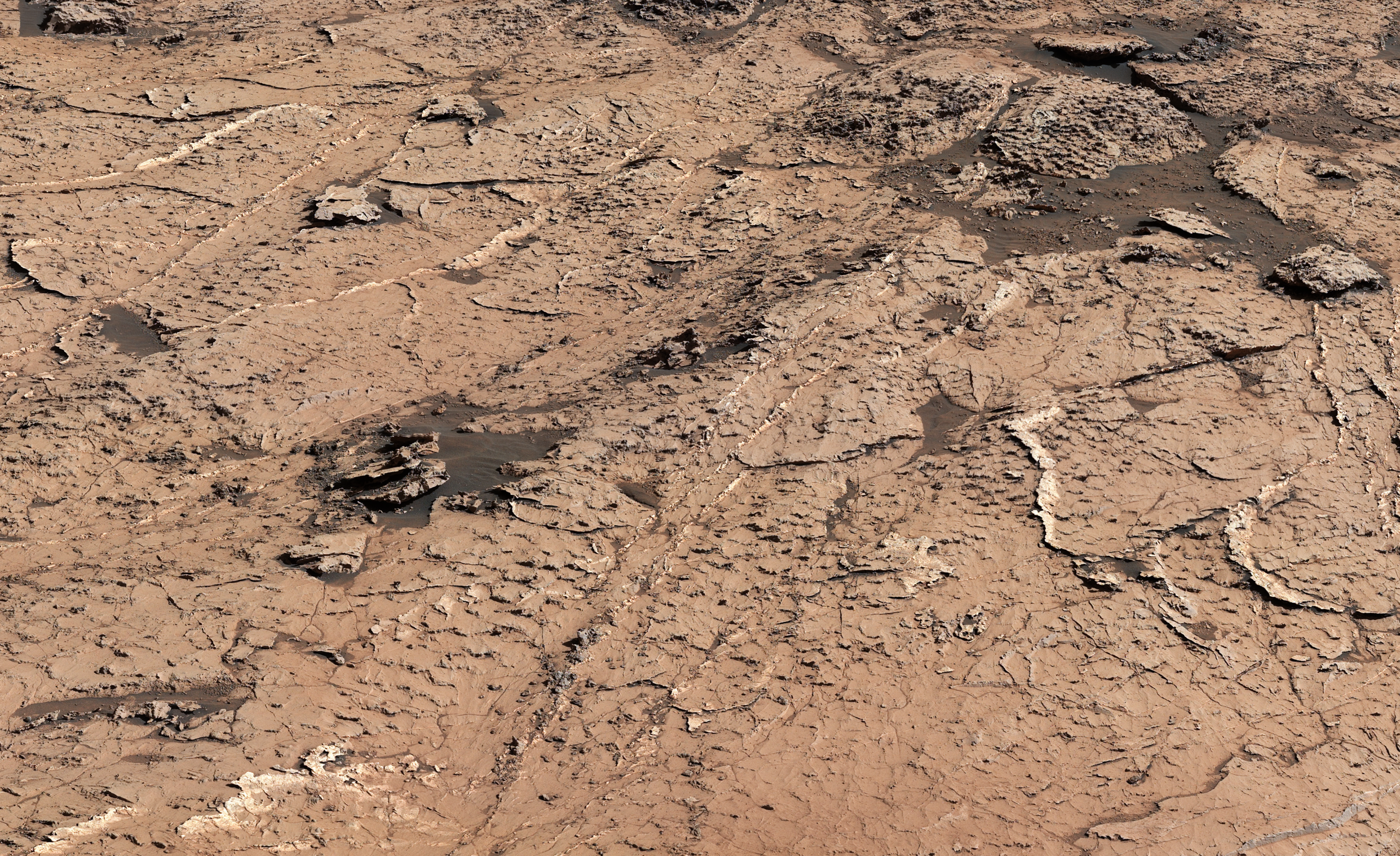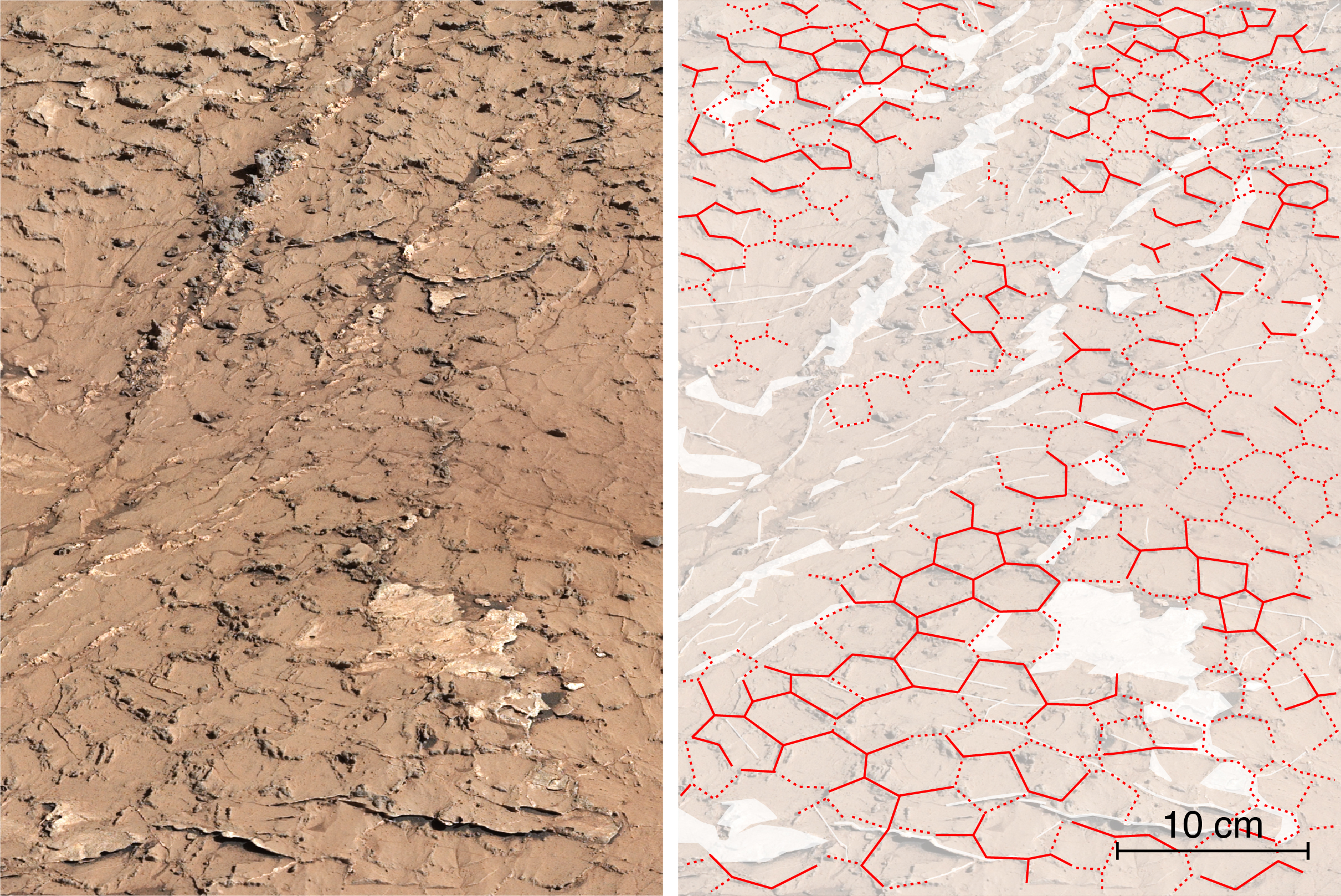Curiosity Views Mud Cracks in the Clay-Sulfate Transition Region

| Credit | NASA/JPL-Caltech/MSSS/IRAP |
|---|---|
| Language |
|


NASA’s Curiosity Mars rover found preserved, ancient mud cracks that scientists believe were formed after long cycles of wet and dry conditions over many years. The discovery marks the first evidence of these wet-dry cycles on Mars. The cracks were found while the rover explored a transitional region between an area enriched with clay minerals and one enriched with sulfate minerals. The mud cracks were captured in this mosaic by Curiosity’s Mastcam on June 20, 2021, the 3,154th Martian day, or sol, of the mission. The mosaic is made up of 143 images that were stitched together after being sent back to Earth.
Figure A shows a close-up of the mud cracks. Figure B shows another close-up of the mud cracks alongside the same image with the hexagonal shapes outlined in red.
The hexagonal shapes are similar to those found at locations on Earth such as Death Valley National Park’s Racetrack playa. They form only after many years of alternating wet and dry conditions. When the mud cracks initially form, they have sharp, T-shaped angles within their “pits.” After being gently rehydrated many times, those sharp angles soften into Y-shapes that become ridges as the rock is eroded.
Evidence pointing to wet-dry cycles is exciting to Curiosity’s scientists because while no one is exactly sure how life first forms, one prevailing theory suggests that these wet-dry cycles are supportive, perhaps even required. The conditions that sustain microbial life – a long-lasting lake, for example – differ from those that scientists think kickstart the chemical reactions that might lead to life.
Driving those chemical reactions are long chains of carbon-based molecules called polymers, which require just the right conditions. Water is needed to mix chemicals into a soup, where they can react with one another. Too much water will dilute the soup, making it difficult for polymer-forming chemical reactions to occur; too little water, and the chemicals can’t adequately mix and react. Wet-dry cycling can strike a balance between the two.
Curiosity was built by NASA’s Jet Propulsion Laboratory, which is managed by Caltech in Pasadena, California. JPL leads the mission on behalf of NASA’s Science Mission Directorate in Washington.
For more about Curiosity, visit:
https://mars.nasa.gov/msl




